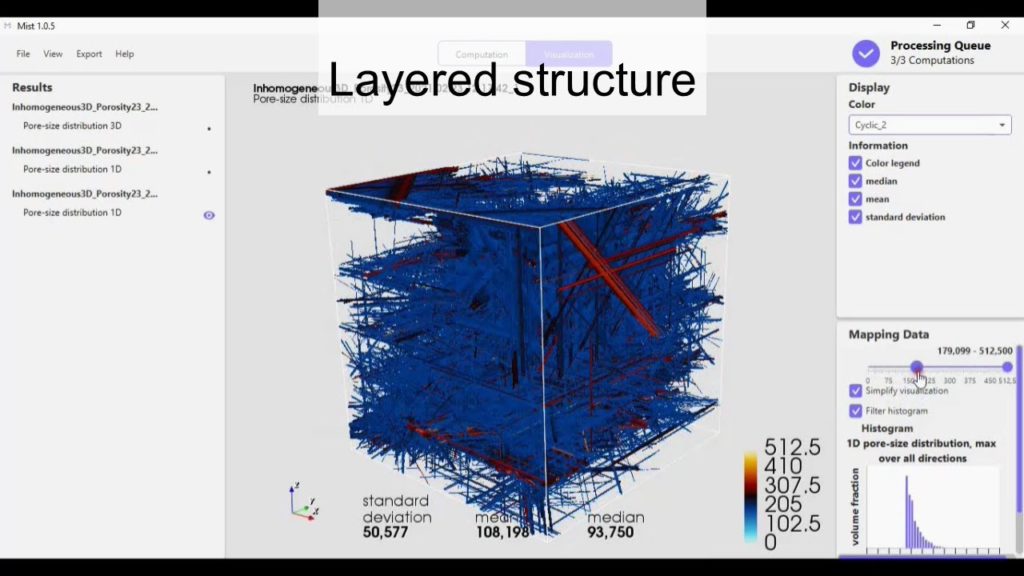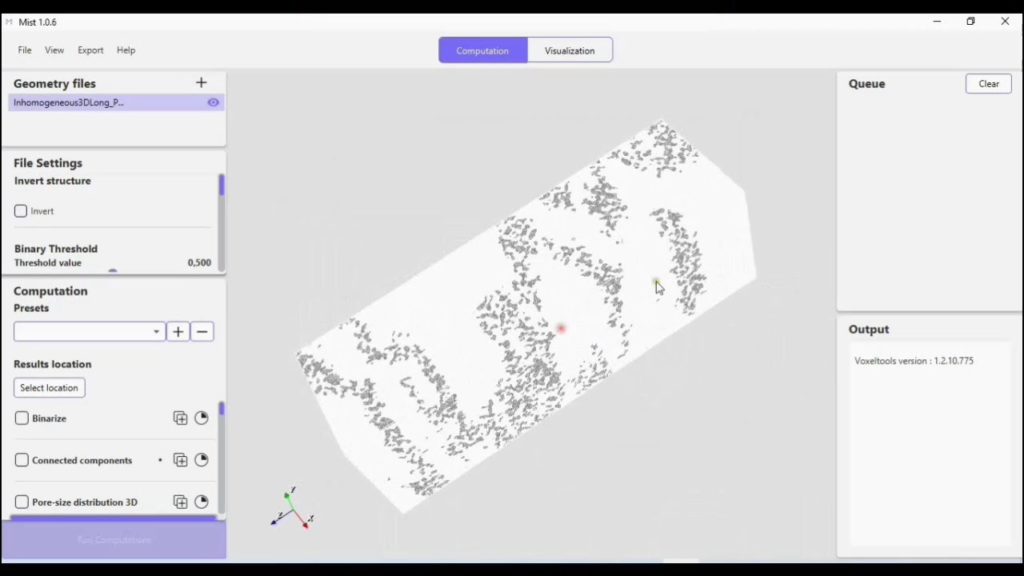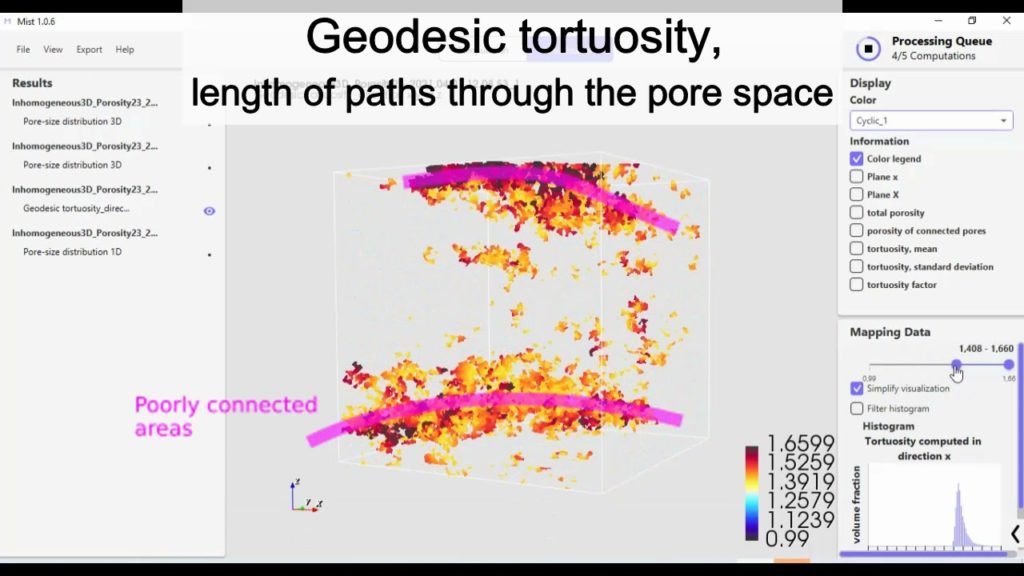MIST – supporting data driven innovation in materials science
Free download
Porous material design
Structure/property optimization. How can MIST help?
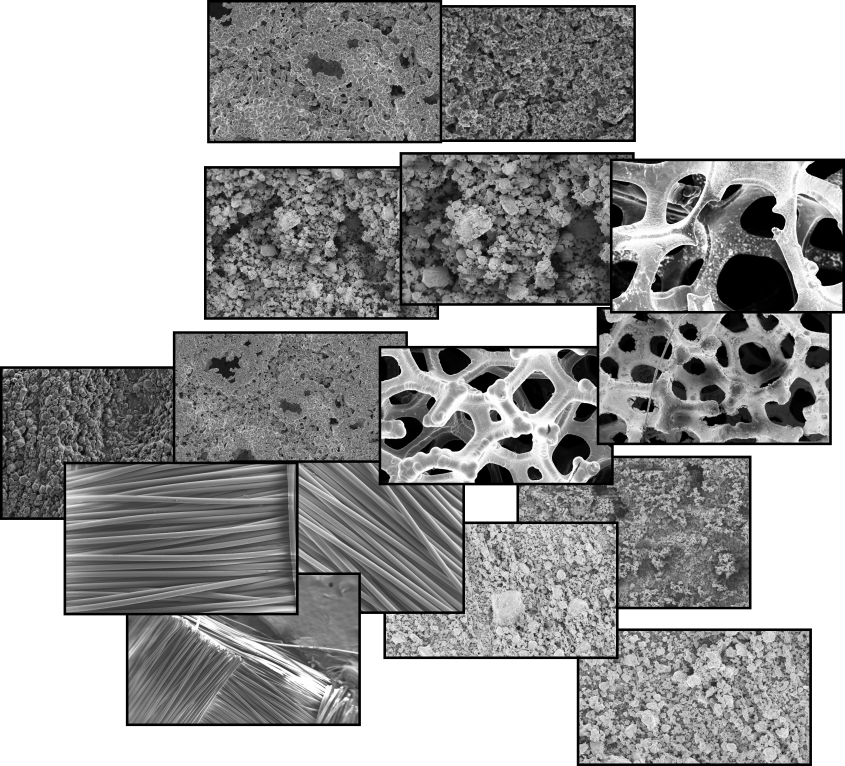
Scanning electron microscopy images from the dataset NFFA-EUROPE – Hierarchical SEM Dataset, by Aversa, Rossella; Modarres, Mohammad Hadi; Cozzini, Stefano; Ciancio, Regina; licenced under CC BY 4.0
Quantify essential geometrical characteristics
Quantify properties of the 3D structure that are essential for the material’s large scale behaviour. E.g., connectivity of a low porosity material, or anisotropy and heterogeneity of a high porosity material.
Correlate geometrical characteristics with material properties
The methods for 3D geometry characterization in Mist are chosen because they explain and predict material properties well. See the link below for how this applies to properties such as mass transport, electrical conductivity and heat transfer.

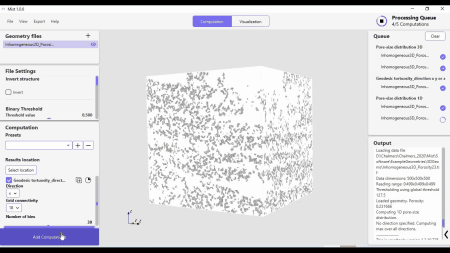
Get to know the material structure in detail through interactive 3D visualization
The properties of a porous material are determined by its 3D pore structure. To fully understand the material it is therefore necessary to understand the 3D structure. Get to know your material in detail by exploring the 3D structure interactively in Mist.
MIST features
3D geometry characterization methods
Adaptations to different user profiles
For regular users
Accessible tutorials
Learn how to use and interpret the 3D geometry characterization methods in Mist through tutorials with detailed video instructions.
Easy-to-use interface
Mist comes with an easy-to-use graphical user interface. Streamline the workflow and compute the geometry characterization for multiple structures simultaneously, visualize settings in 3D, and interact with the characterization results in 3D to get to know the materials structure in detail.
For programming-oriented users
Run computations in batch-mode
The computation engine can be run separately from the user interface for more advanced customization.
Advanced post-processing
For advanced post-processing of 3D geometry characterization data from Mist, load the results into open-source 3D visualization software like Paraview or load the results into Matlab using scripts supplied here.
